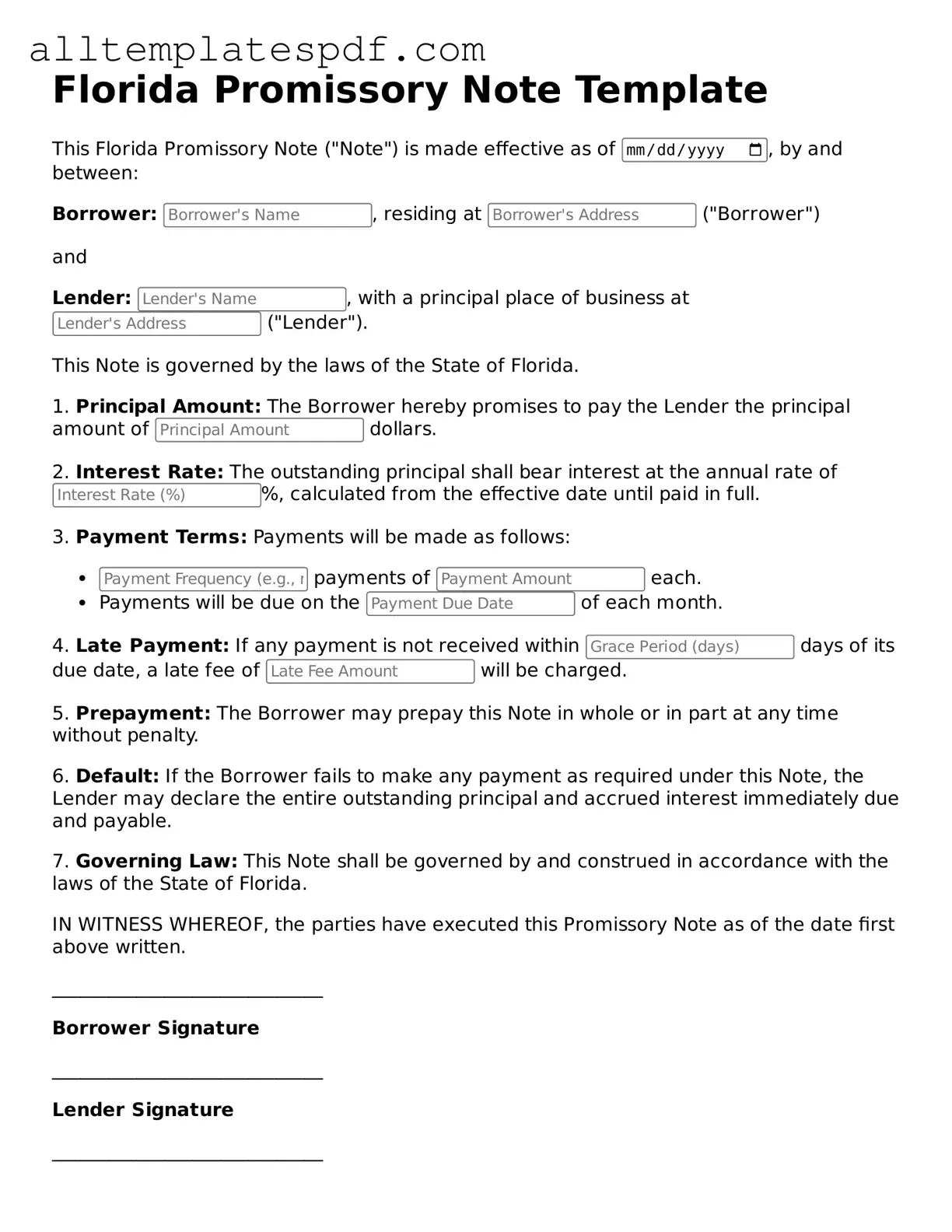When filling out the Florida Promissory Note form, many individuals inadvertently make mistakes that can lead to complications later on. One common error is failing to include all necessary parties. It’s crucial to ensure that both the borrower and lender are clearly identified. Omitting a party can create confusion and potentially invalidate the agreement.
Another frequent mistake is neglecting to specify the loan amount. The form should clearly state the exact amount being borrowed. If this information is missing or inaccurately stated, it can lead to disputes over how much is owed.
People often forget to include the interest rate. Without this detail, the terms of repayment may become ambiguous. It is essential to clearly outline whether the loan will accrue interest and, if so, at what rate. This helps prevent misunderstandings down the line.
Additionally, some individuals overlook the repayment schedule. The form should specify when payments are due and how often they will be made. This clarity is vital for both parties to understand their obligations and avoid any missed payments.
One mistake that can have serious implications is not signing the document. Both the borrower and lender must sign the Promissory Note to make it legally binding. A missing signature can render the entire agreement unenforceable.
Another error involves failing to date the document. The date of signing is significant as it marks the beginning of the agreement. Without a date, it may be challenging to determine when the terms of the note take effect.
Some people also neglect to keep copies of the signed Promissory Note. It is vital for both parties to retain a copy for their records. This ensures that everyone has access to the terms of the agreement should any disputes arise.
Lastly, individuals may not consider the need for witnesses or notarization, depending on the amount of the loan. While not always required, having a witness or notarizing the document can add an extra layer of protection and authenticity to the agreement.
